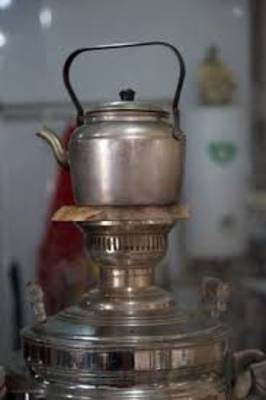
The Rawanduz Kurdish Dimunitive
کچکۆکه ی رواندز
Dimunitive occurs in language either as a suffix (external formation) or by changing and adding vowels and consonants (Internal Formation). It can also be prefixed as with North Germanic languages. The diminutive can be used both negatively (disparragingly) and positively (expressingg love, affection) although positive connotations were probably the first.
In Kurdish (dialect of Rawanduz) there is a dimunitive suffix which can vary from:
1. oka ۆكه as in kichk-oka کچکۆکه little, small, xan-oka خانۆکه little house, shaytan-oka شه یتانوکه snail (literally little devil), gird-oka گردۆکه little hill, Nawzad-oka little Nawzad (often used in combination with people´s name to diminish their importance or bestowing the quality or an ordinary air.
2. -loka as in pashaloka پاشالۆکه little pasha.
3. -ka که Aaluka ئالوکه little plums, Hama Shinka حه مه شینکه little Hama Shin and in European female names (Julika, Anneke,Levke, Beke, Mieke, Ineke,Tineke,Mareike, ,Elke, Bianca) sometimes even in male names such as Sönke. The suffix -ke is also found in slavic and in German family names as in Mattke children of Matthäus Jahnke (children of Jan) or ca be suffixed to small businesses.
4. -ilka یلکه as in chawilka چاویلکه glasses literally little eyes/ -iyl as in kichiyl کچیل little, quziyl قوزیل a man who behaves like a woman.
5. -ila xitila ختیله cute .This -l or -erl suffix is consistent with Austrian / Swabian or Bavarian German, a more colloquial "cute" usage would be Mädl, Madl or Mäderl. replace the normal Bisschen ('a little' with Bissl. This has become a very distinctive feature of Austrian German. Compare also English piglet. Swedish as with Danish and Norwegian prefixes lill (lillgamel : young people who acta s adults)
This suffixes in the dialect of Rawanduz-Kurdish is consistent with the dimunitive suffix –ke in other Indo-European languages:
1. Not only male names were made female by adding the dimunitive suffix -ke but also female words such as Frau, Weib were made dimunitive in Dutch and German (Frauke, Wiebke, Mieke, Femke) which probably changed to the neuter gender –chen by palatalization (as with the Dutch -tje) most prominenly in the word das Mädchen (maid, girl) und Brötchen small bread rolls. German and French male names could be made female by adding a suffix for little. German -chen, corresponding with English -kin as in "napkin.
2. English added k/-ock as in bollock, bullock, buttock, fetlock, hillock, mullock, pillock.
3. Scotttish -ockie: hooseockie (little house), wifockie (little woman).
4. Dutch -kje for words ending in -ing: koning (king) → koninkje The form -ke(n) is nowadays still present in many women's names: Janneke (< Jan < Johannes, Dutch equivalent of John); Renske (< Rens, men's name); Marieke, Marijke, Mieke, Meike (all from Maria); Anneke (< Anna, Anne); Tineke (< Martine); Joke, Hanneke (< Johanna); and many others like Lieneke (<< Catharina, compare Caitlin), Lonneke, Wieteke, Dineke, Nelleke, etc. The diminutive was a normal way (in the Netherland of forming men's names into women's names: Dirk → Dirkje, Pieter → Pietertje.
5. Latin culus, -cula, -culum, e.g. homunculus (so-small man) from homo (man)
6. Spanish uco/-uca (nene, "children" → nenuco
Jamshid
Bremen, 14 April 2017
